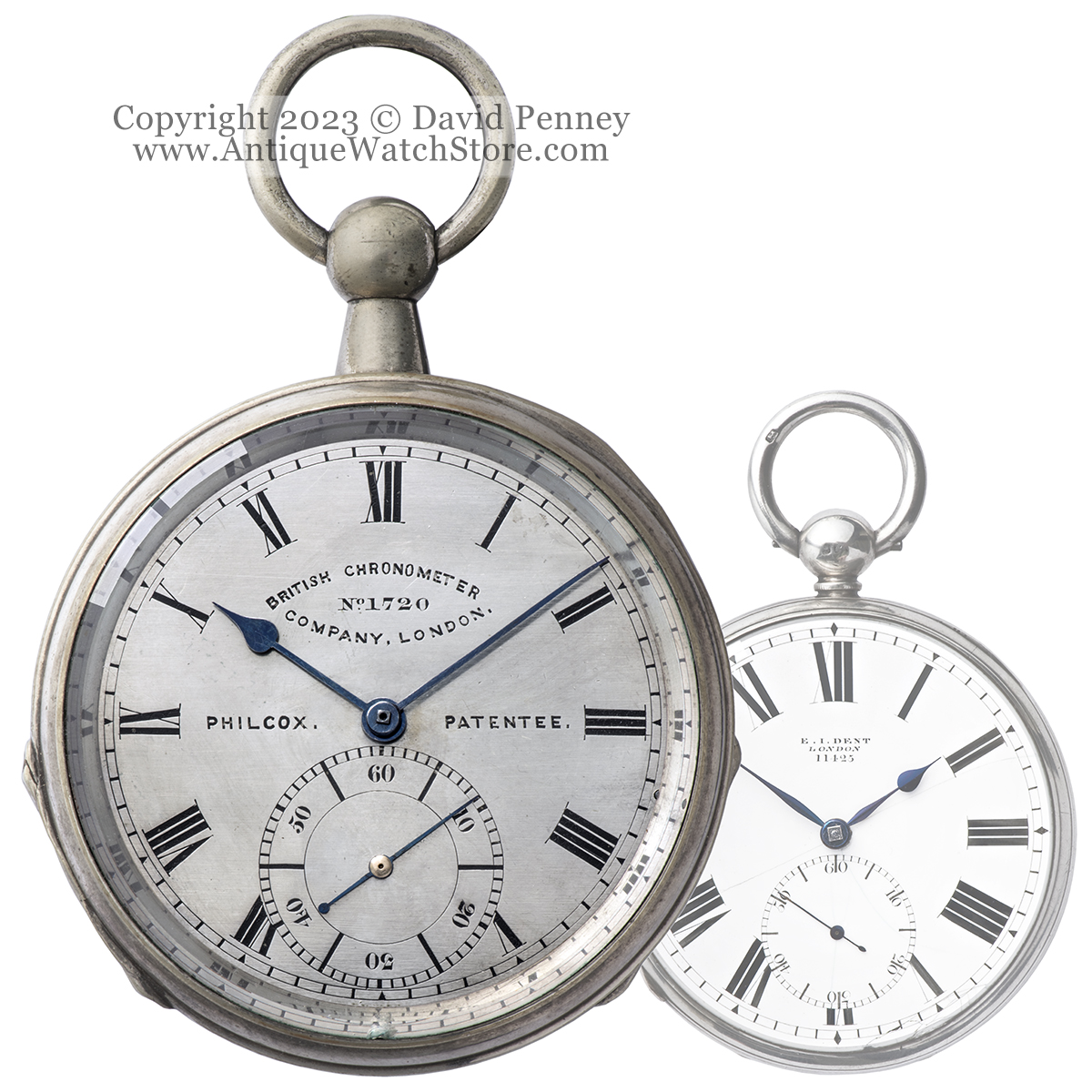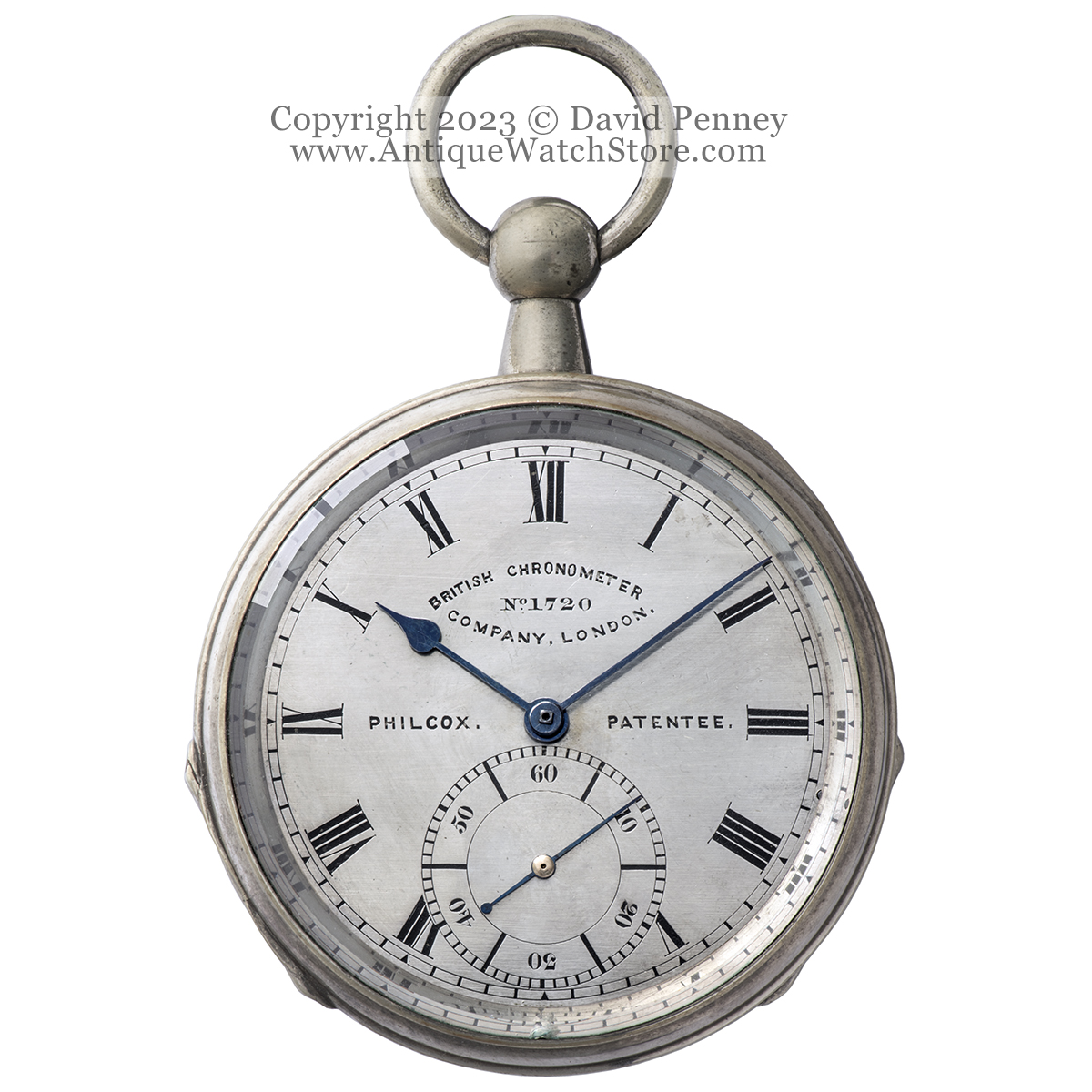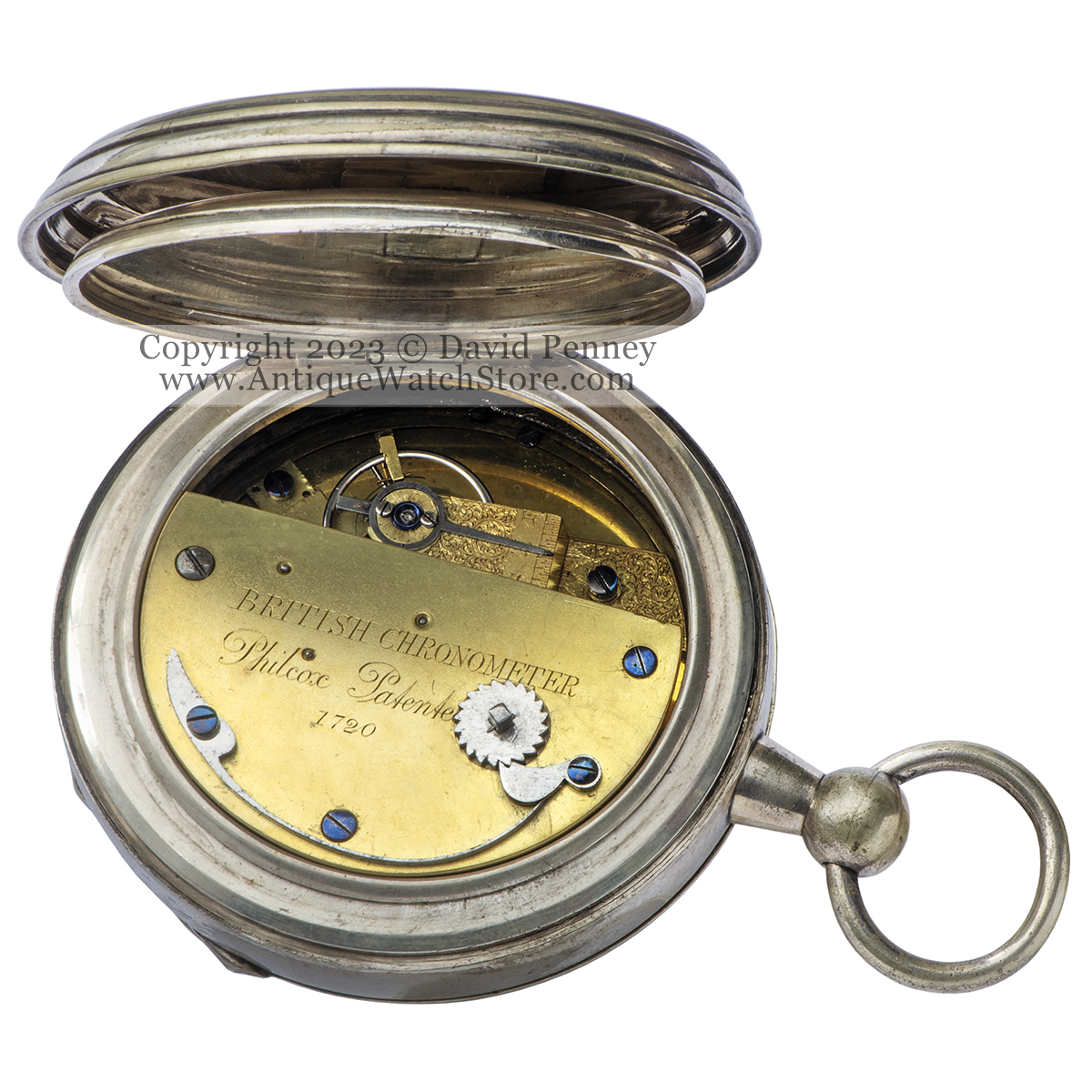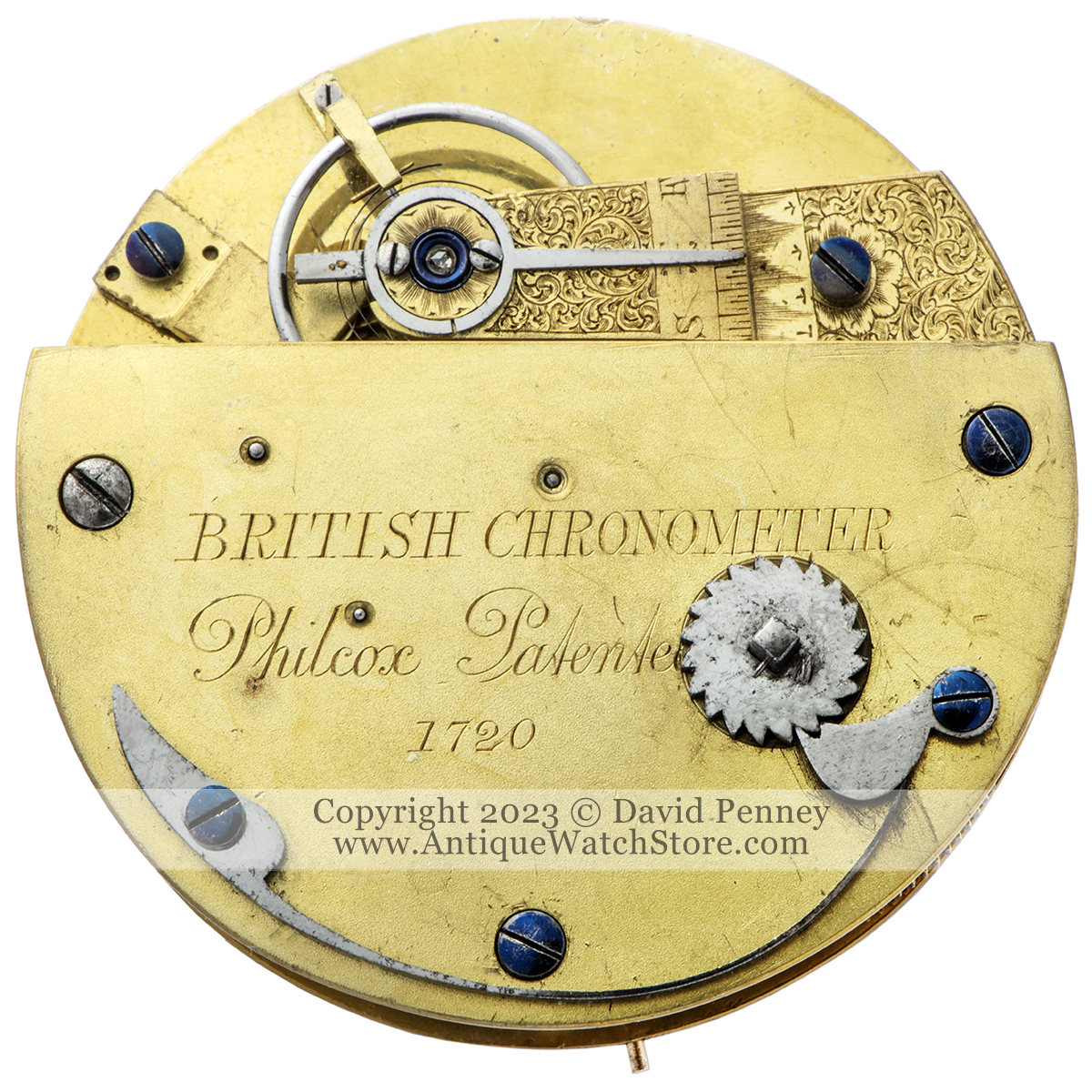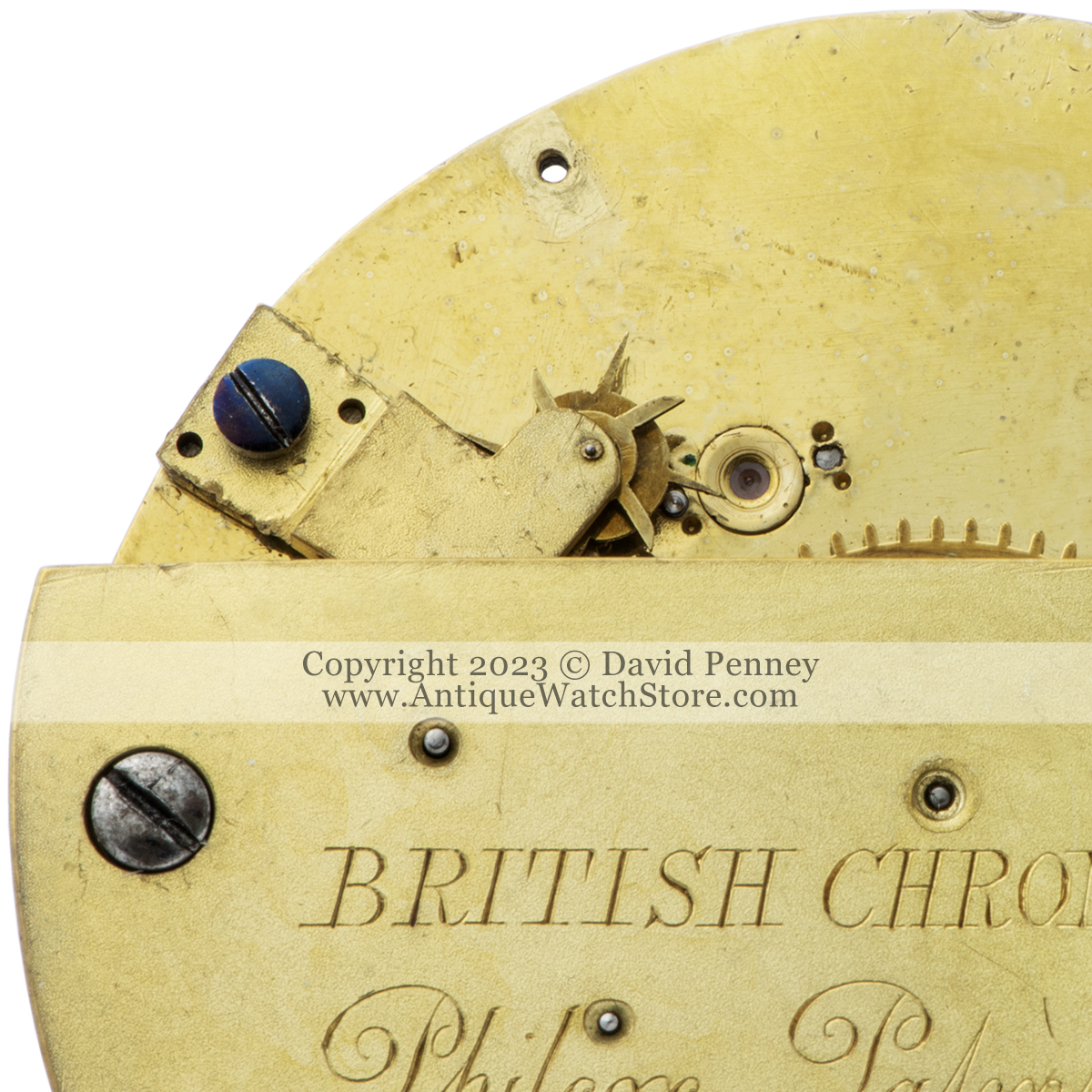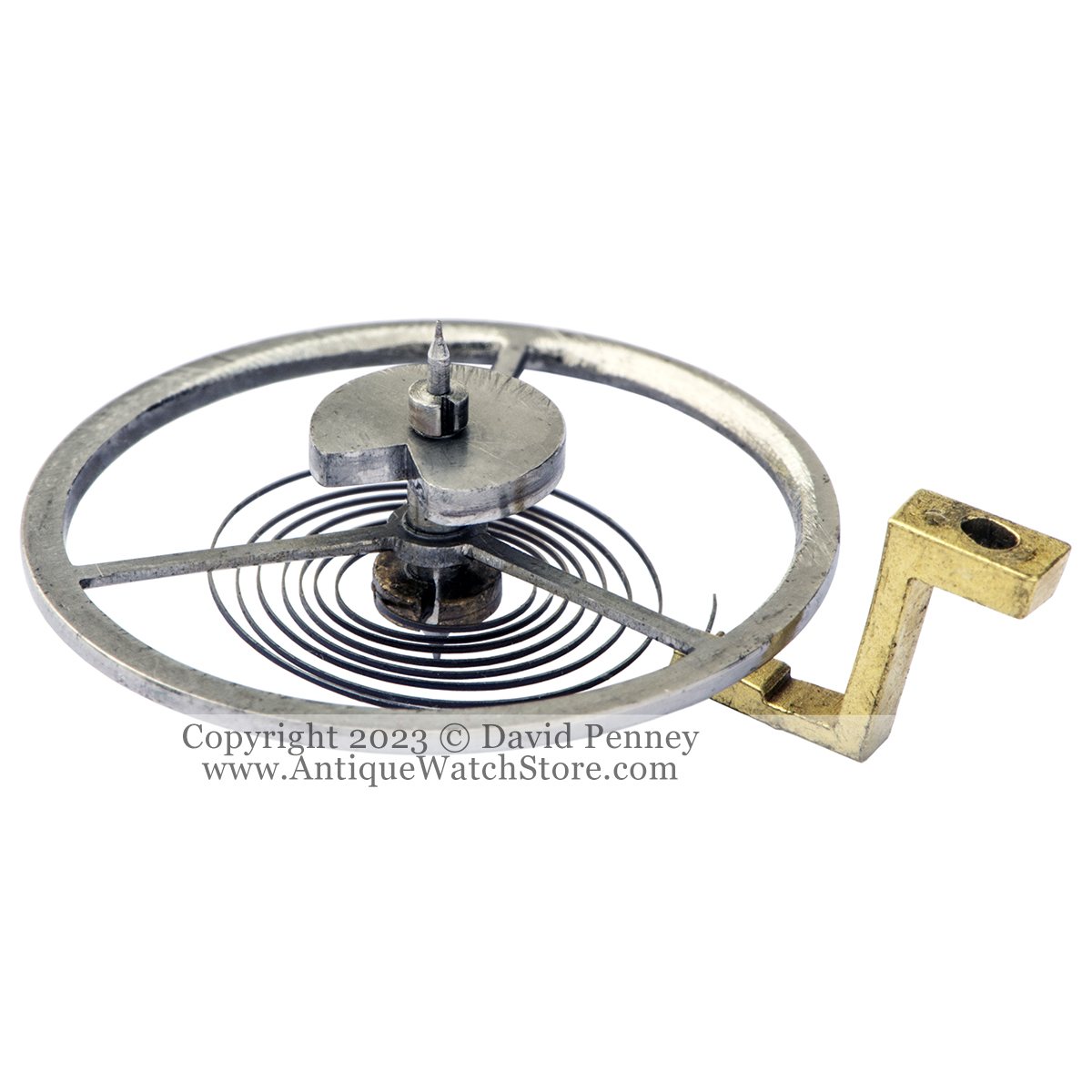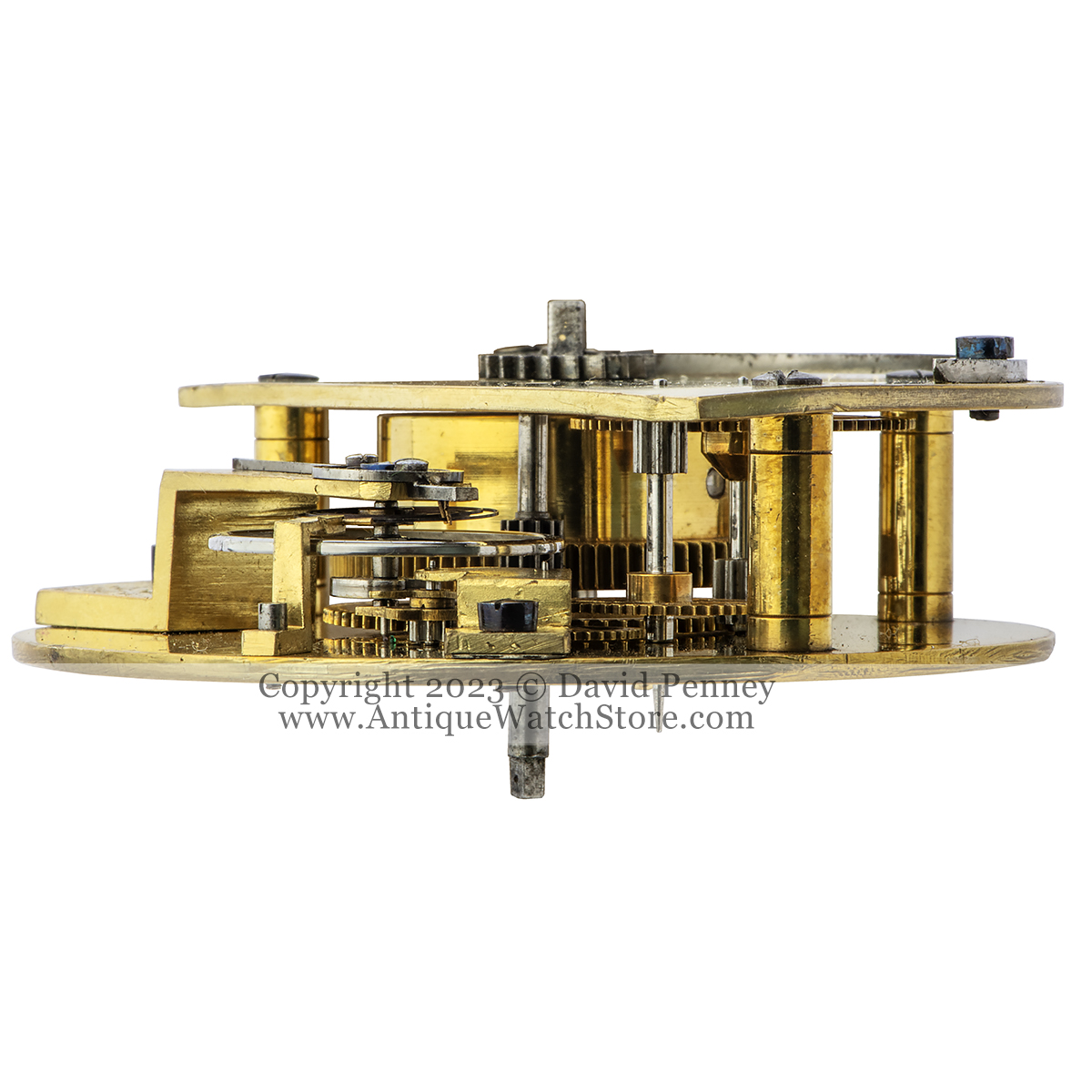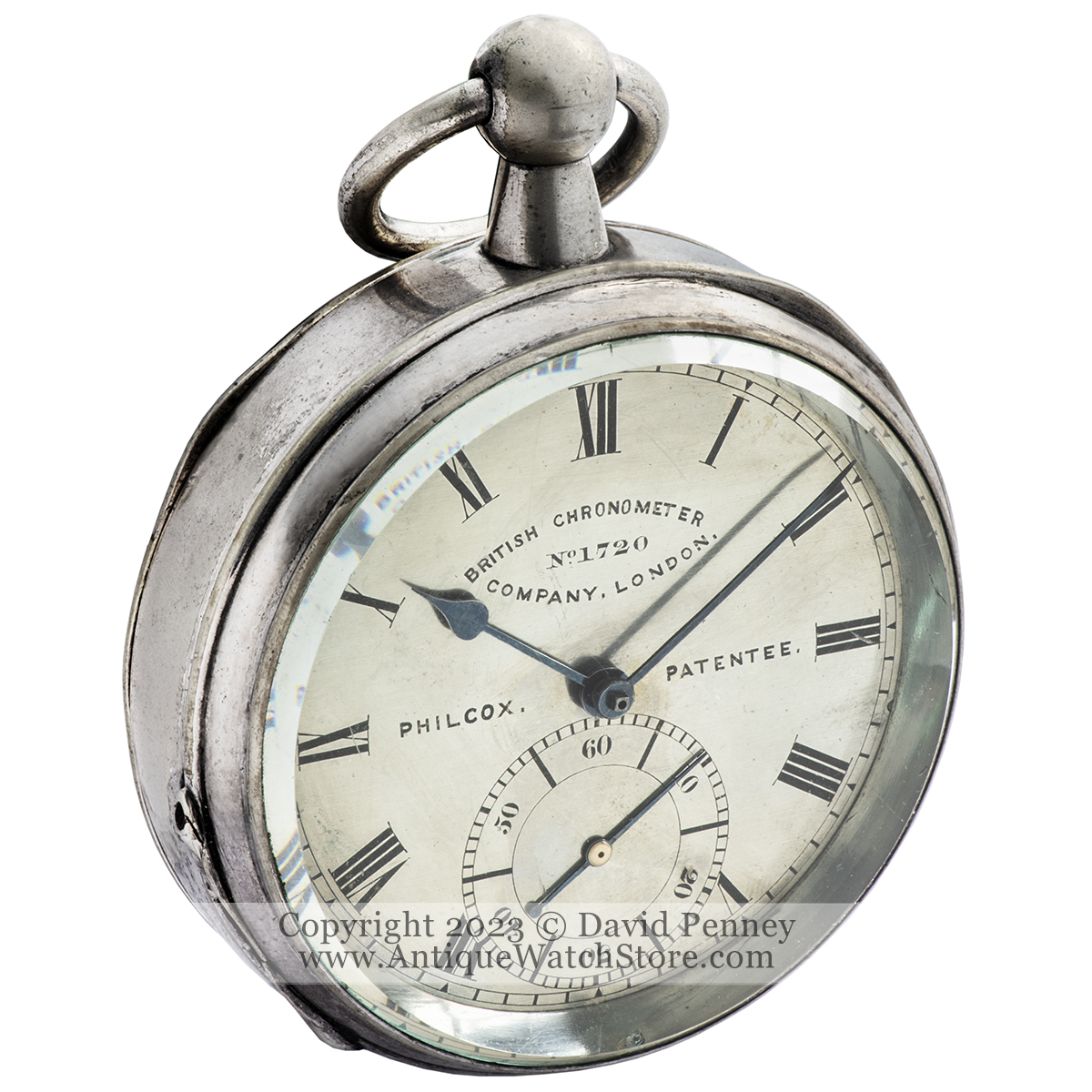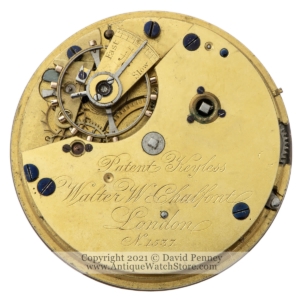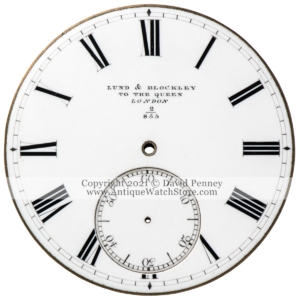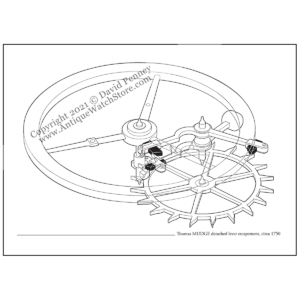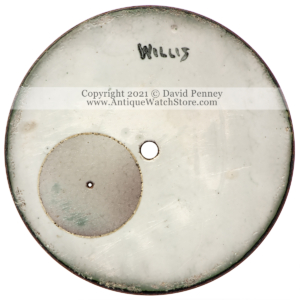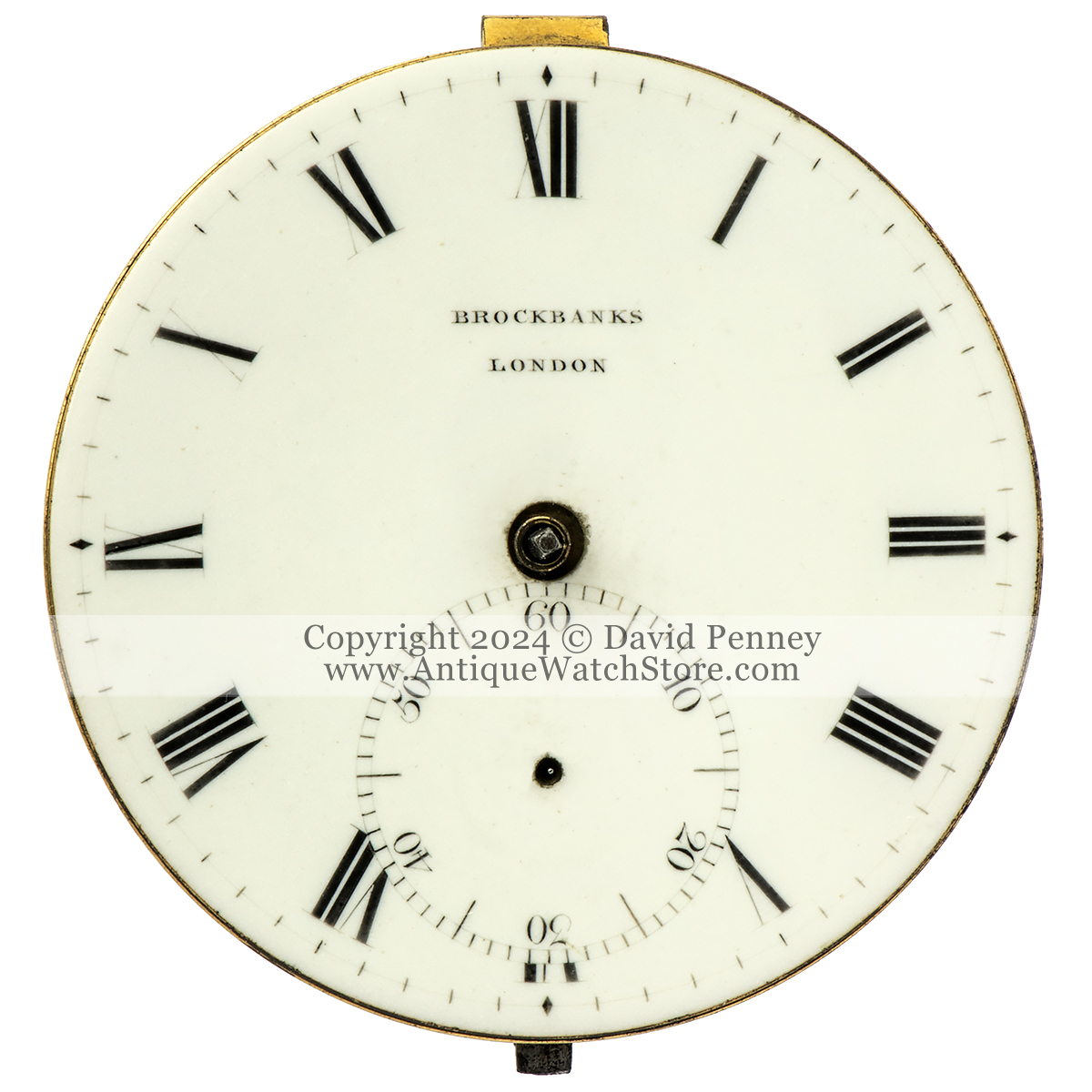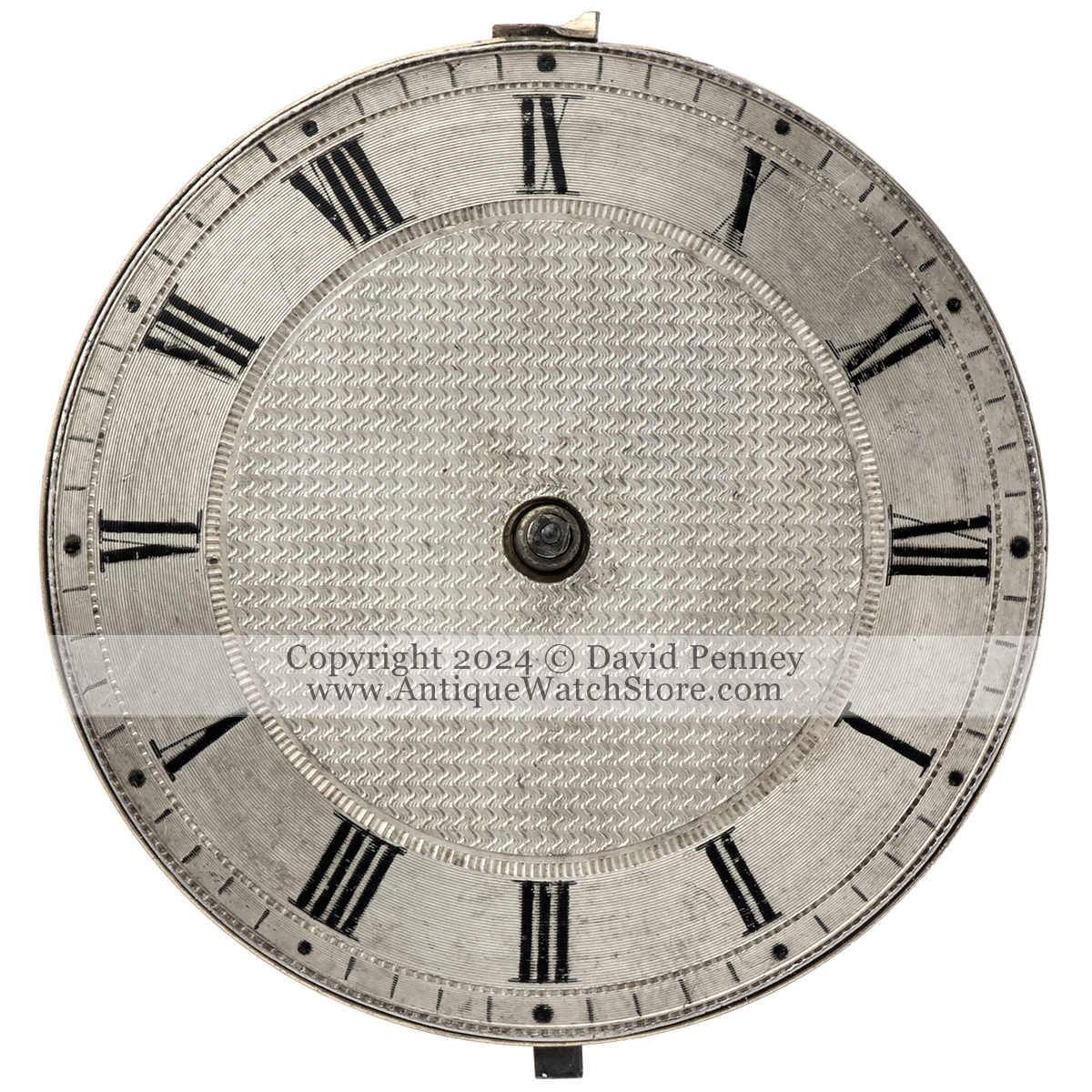British Chronometer Company ‘PHILCOX Patentee’ London. No 1720
A unique (I believe) example of this rare type of ‘chronometer,’ as well as retaining its original Patent escapement, circa 1845.
£2,795.00
Large silver plated double back watch-form case. Three-quarter plate going-barrel movement with jeweling on the staff only. Philcox’s patent ’diamond lever escapement,’ in effect an unusual form of duplex escapement with steel roller – I don’t believe it was ever jewelled. Steel balance, spiral balance-spring. Silvered dial, blued-steel hands. 90 mm diameter and weighing over 600 grams – for comparison, I have also pictured it next to a 60 mm diameter pocket chronometer of the same period.
George Philcox (1816-1890?), formerly in Southwark Square having moved to Wellington St, London Bridge at this period – Patent No 8145, July 1839 ‘diamond lever escapement.’ Born in Ashford, Kent, and starting his working life in Canterbury, George Philcox had an eventful life that included numerous changes of address, two Patents, failed inventions, disputes within the pages of the Horological Journal, and retirement in old age that saw him able to secure a place within the Clock and Watchmakers’ Asylum. This was a charity supported ‘last home’ for at least a few elderly watch and clockmakers and was situated at Colney Hatch, New Southgate, north London.
See also the article by David Buckden on George Philcox that appeared in the December 2018 issue of Clocks magazine in which he discusses Philcox’s life, including his failed attempt to raise capital for a proposed British Chronometer Company. NB: No other surviving example is known from the failed venture, this being the first time No 1720 has been described. It is also one of only two ’diamond lever escapements’ known to exist.
Case plating rubbed and general signs of wear and tear, at least showing that this watch has seen some use. It could, however, never merit the term ‘chronometer’, especially with the plain balance and simple train. That said, this is probably the only surviving example of its kind and is certainly worthy of museum or collector interest. Ticking but neither cleaned nor otherwise touched by me as I am keen that it should be seen for its originality – warts and all.
Item available
Description
Large silver plated double back watch-form case. Three-quarter plate going-barrel movement with jeweling on the staff only. Philcox’s patent ’diamond lever escapement,’ in effect an unusual form of duplex escapement with steel roller – I don’t believe it was ever jewelled. Steel balance, spiral balance-spring. Silvered dial, blued-steel hands. 90 mm diameter and weighing over 600 grams – for comparison, I have also pictured it next to a 60 mm diameter pocket chronometer of the same period.
George Philcox (1816-1890?), formerly in Southwark Square having moved to Wellington St, London Bridge at this period – Patent No 8145, July 1839 ‘diamond lever escapement.’ Born in Ashford, Kent, and starting his working life in Canterbury, George Philcox had an eventful life that included numerous changes of address, two Patents, failed inventions, disputes within the pages of the Horological Journal, and retirement in old age that saw him able to secure a place within the Clock and Watchmakers’ Asylum. This was a charity supported ‘last home’ for at least a few elderly watch and clockmakers and was situated at Colney Hatch, New Southgate, north London.
See also the article by David Buckden on George Philcox that appeared in the December 2018 issue of Clocks magazine in which he discusses Philcox’s life, including his failed attempt to raise capital for a proposed British Chronometer Company. NB: No other surviving example is known from the failed venture, this being the first time No 1720 has been described. It is also one of only two ’diamond lever escapements’ known to exist.
Case plating rubbed and general signs of wear and tear, at least showing that this watch has seen some use. It could, however, never merit the term ‘chronometer’, especially with the plain balance and simple train. That said, this is probably the only surviving example of its kind and is certainly worthy of museum or collector interest. Ticking but neither cleaned nor otherwise touched by me as I am keen that it should be seen for its originality – warts and all.
